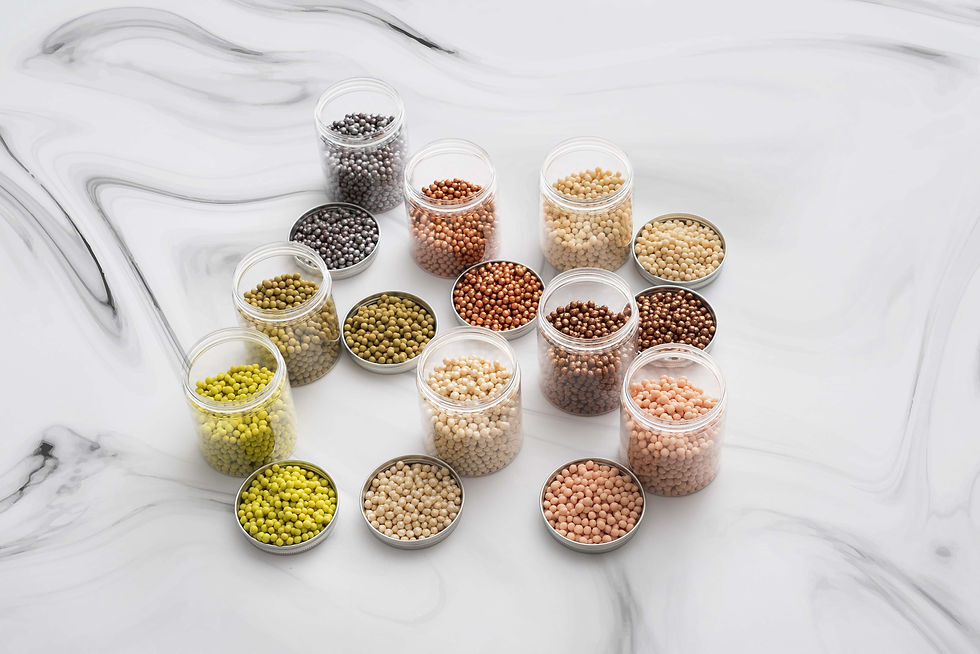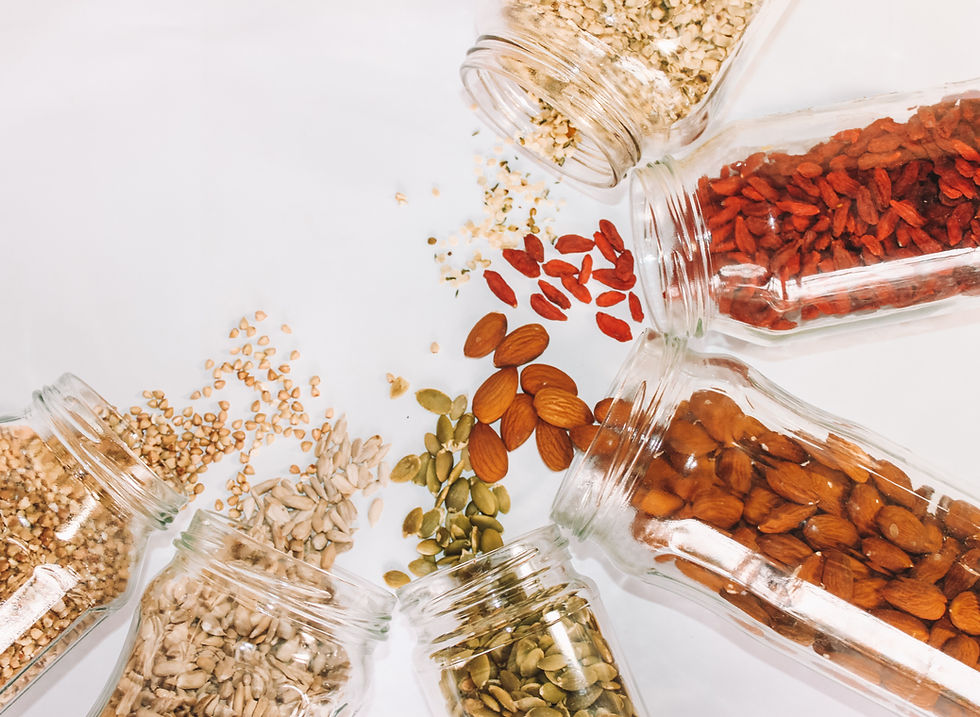Diet and menopause
- Emilie Berthet Clairet - Nutrition
- Apr 1, 2021
- 3 min read
Updated: May 1, 2021
Menopause marks a natural transition for women when their menstrual cycles stop. For many, the time is associated with uncomfortable symptoms. (1) [CS1] The decline of oestrogen, one of the female sex hormones, can lead to weight gain, sleeping disorders, hot flushes and other troublesome side effects, as well as various metabolism changes and a decrease in bone density. Hormone replacement therapy can help to reduce symptoms, but there are some downsides. Your healthcare provider will be able to assess the benefits and risks to determine which therapy will suit you best. A change in diet and lifestyle can also be beneficial for women going through this phase and can help support the effects of hormone replacement treatments.
What to eat
There‘s lots of evidence to show that certain foods can be particularly helpful in relieving the symptoms of menopause …
Foods rich in calcium, phosphorus and vitamin D: dairy products and green, leafy vegetables
Because menopause causes a decrease in bone density, it’s essential for women going through “the change” to eat foods rich in calcium, phosphorus and vitamin D, such as dairy products and green, leafy vegetables.
However, while studies have shown that increasing your consumption of dairy can have a positive impact on bone density, it’s important to remember that many dairy products contain a high level of saturated fat, so try to choose non- or low-fat dairy options where possible. For calcium and vitamin D, look out for foods that have been fortified.

Foods rich in fibre: whole grains, fresh fruits and vegetables
Fibre is essential for maintaining a healthy digestive system and gut and supporting metabolic reactions in the body, however it’s often somewhat lacking in our diets. After menopause it becomes even more important to choose foods that are rich in fibre, and studies show that it can reduce the risk of heart disease and help minimise weight gain.
Whole grains are a good option, as they’re not only rich in fibre but also vitamin B – another nutrient that can help the metabolism cope with hormonal changes. Fresh fruits and vegetables should also be prioritised, as they offer a raft of benefits for menopausal women. Eating “a rainbow” of five different fruits and vegetables each day can provide a good fibre intake along with various phytonutrients (see below) that help decrease the risk of certain conditions, like cancer and cardiovascular disease.
Foods rich in phytonutrients
Some grains and vegetables contain molecules called phytonutrients, which have a direct beneficial effect on the body’s metabolism. Well-known sources include grapes (and also wine!). Grapes are also powerful antioxidants. Particularly important for women are phytoestrogen variants, as they mimic the effect of oestrogen in the body. Foods rich in phytoestrogen include soybeans, chickpeas, peanuts,flax seeds, barley, grapes, berries, plums and green and black tea, among others. Eating more of these foods has been proven to relieve the symptoms of menopause in the most natural way.

Healthy fats
Fats found in food can be either saturated or unsaturated. Saturated fats are often considered “unhealthy”, as they increase our risk of cardiovascular disease. Unsaturated fats, on the other hand, are generally considered to be “healthy”, as they have a protective effect on the body. Omega 3, found in foods such as fish (especially salmon, sardines and anchovies) and seeds (flax seeds, hemp seeds, chia seeds etc.) is particularly beneficial and can help decrease the risk of cardiovascular disease.
Some studies have found that unsaturated fats can even reduce unpleasant symptoms of menopause, such as hot flushes. While the findings need further investigation, it’s still worth incorporating more polyunsaturated fats into your diet, as they’re good for your overall health anyway!
As menopause progresses, oestrogen levels decline, and muscle mass tends to decrease as a result. It’s therefore important for menopausal women to maintain a good intake of protein. Protein can come from animal sources like meat, dairy and fish, while plant-based protein can be found in nuts, seeds and whole grains and can be particularly beneficial to health as we age.

Exercise
Engaging in physical activity can help reduce many menopausal symptoms and improve general health. Regular sports sessions can increase both muscle mass and bone density and, of course, help with weight loss. Exercise can also counter problems such as sleeping disorders and reduce the risk of cardiovascular disease. In some cases, it can also help alieve symptoms of menopause, such as hot flushes and mood swings.
The essential takeaway from all of this: when facing the dreaded “change”, it’s essential to follow as healthy a diet and lifestyle as possible in order to navigate the ups and downs it brings with it. Menopause is a complicated and difficult time for a lot of women, and while hormonal replacement therapy can be a real help, focusing on good nutrition and physical wellbeing remains the true cornerstone of living it well.




Comments